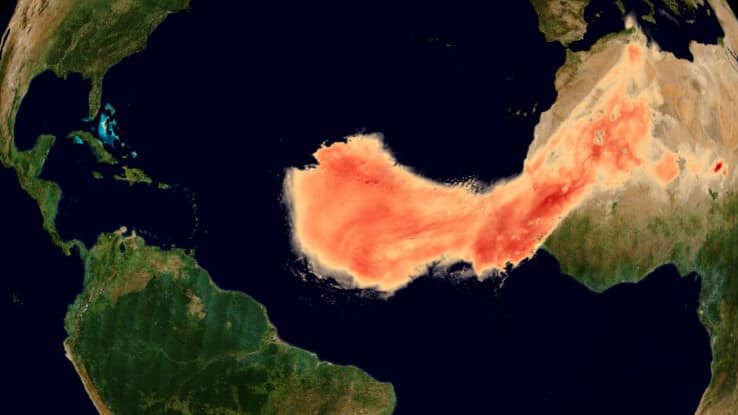
Sahara dust delivers vital minerals to marine life miles away
What's the story
A recent study from the University of California, Riverside, has shown that dust from the Sahara desert is a big deal for marine life. This iron-rich dust gets converted into a form that's super easy for oceanic phytoplankton to absorb. This happens as the dust travels across long distances and hangs out longer in our atmosphere. Timothy Lyons, a biogeochemist who worked on the study, compared this process to iron fertilization, which affects life both in oceans and on land.
Dust journey
Sahara's dust: Earth's largest source of airborne particles
Sahara desert is the biggest source of airborne particles on Earth. Every year, about 800 million metric tons of this dust gets blown all the way to the US! This dust is packed with iron isotopes, which are super important for the biochemical processes that turn atmospheric carbon into organic molecules. But not all types of iron can be easily absorbed by living organisms. The atmospheric conditions play a big role in determining the kind of iron that eventually lands.
Iron transformation
Atmospheric journey enhances iron's bioavailability
Lyons noted that the dust reaching places like Amazon basin and Bahamas might hold iron that's particularly soluble and easier for life to use. This is because of its lengthy journey from North Africa and its prolonged exposure to atmospheric chemical processes. The team made this discovery by analyzing drill cores from the ocean floor. They found that while the total amount of dust decreased with distance, the portion containing iron that can be used by living beings went up.
Ecological impact
Saharan dust's iron content boosts marine food chain
The dust from the Sahara desert, packed with bioactive iron, is a key player in keeping a massive food chain alive thousands of kilometers away. It fertilizes oceanic phytoplankton and feeds plants in places as distant as Amazon. These ecosystems are vital for oxygen production on our planet. Past research has shown a connection between bioactive iron patterns and spots with high biological activity, like increased microbe activity on Caribbean coral reefs and fertilization in Amazon region.